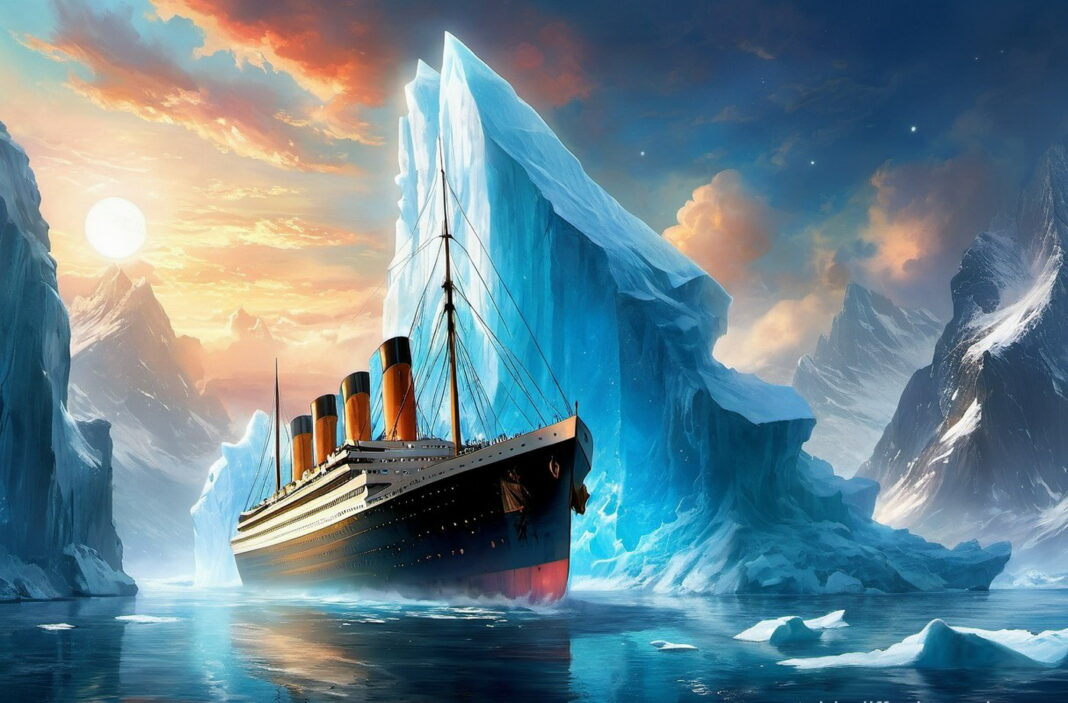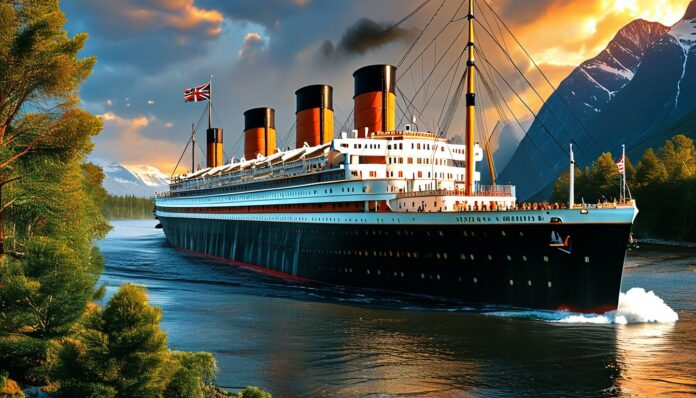Perhaps everyone has seen the film by director James Cameron, “Titanic,” starring Leonardo DiCaprio and Kate Winslet. In this movie, which runs for 3.5 hours, the tragedy of human carelessness and overconfidence, which cost many lives, is depicted in detail. Over 1500 people perished on the Titanic, making this disaster the largest in the history of shipwrecks.
The disaster film itself set a record, receiving 87 different cinema awards, including 11 Oscars.
History of the Shipwreck
The Titanic was launched on May 11, 1911. Over 100,000 people gathered on the waterfront of Belfast, United Kingdom, to witness this event. The ship was astonishing in size: it was nearly 300 meters long and as tall as an eleven-story building. At that time, it was a marvel.
The designers were confident in the reliability and unsinkability of their creation. They equipped the Titanic with a double bottom and 16 watertight compartments, but they did not take into account the iceberg’s piercing ability.
The Titanic set sail from the port of Southampton to New York on April 10, 1912. The liner embarked with 2225 people – passengers and crew – on board. The destination was planned to be reached in a week.
On the fourth day of the voyage, the Titanic received seven radio messages warning of the threat of colliding with icebergs along its route, but the captain of the ship ignored them. The liner continued at maximum speed, trying to surpass the expected sailing times and make headlines in newspapers. The only action the captain took was to order a slight deviation south of the intended route, hoping to avoid encounters with floating ice.
Twenty minutes before midnight, a message was received on the bridge from the lookout sailors about the appearance of an iceberg directly in the ship’s path. The huge ship, running at almost maximum speed, simply could not change its course in time, and less than a minute later, it collided with the iceberg.
Receiving breaches in 5 forward compartments below the waterline, the Titanic began to slowly sink with a downward tilt at the bow. The bilge pumps simply could not cope with the load. At 2:20 am on April 15, the Titanic broke in half and sank. The tragedy claimed the lives of nearly fifteen hundred people, and only a few survivors were rescued from the icy water by the rushing aid of the ship “Carpathia” three hours later.
Causes of the Tragedy
Experts claim that, despite the severity of the accident, such casualties could have been avoided with a more responsible approach to safety rules and by addressing some issues less negligently.
For instance, the assistant captain, who was relieved before the voyage, forgot to return the keys to the box containing binoculars. This was noticed only later, and the box was not opened, so the lookouts during the night of the shipwreck observed without the assistance of optical instruments. One of the lookouts, who survived the tragedy, later stated that, with binoculars at hand, he would have noticed the iceberg’s approach much earlier.
On the Titanic, first-class passengers had unrestricted access to the ship’s radio transmitter. They sent and received so many telegrams that the radio operators could not keep up with even their direct duties and sometimes missed important messages from other ships. And it was precisely on the evening of April 14th, the transmitter of the liner, unable to withstand the extreme load, broke down. The ship’s radio operators tried to fix it urgently, but still could not timely transmit the warning to the captain about the presence of two icebergs on the Titanic’s course, which came from a German vessel.
In case of a disaster, the Titanic was equipped with only 20 lifeboats, which could save only half of the passengers and crew of this voyage. Initially, there were 64 lifeboats, but at the last moment, the ship’s owners decided that such a number of life-saving means cluttered the deck and spoiled the ship’s appearance.
Despite the lack of rescue resources, at the beginning of the evacuation, many of the lifeboats were only half filled, as the Titanic’s crew was completely unprepared for such a situation and panicked, not knowing what to do.
According to some cruel irony of fate, on that day, exercises were supposed to be held on the ship on organizing emergency evacuation of passengers on lifeboats. However, for incomprehensible reasons to this day, the ship’s captain canceled this event. And if it had taken place, it is likely that a much larger number of people could have been saved. The ship’s crew, firstly, would have been better acquainted with the instructions for evacuating lifeboats, and secondly, would have executed it more organizedly.
Interesting Facts about the Titanic:
1. The remains of the Titanic now rest in the Atlantic Ocean at a depth of almost four thousand meters. They were first discovered in 1985 by an expedition led by American geologist Robert Ballard and settled the ongoing dispute since the disaster about whether the ship broke apart or sank whole. The expedition found two halves of the ship, which completely refuted the reports of the Titanic’s second officer, who, defending the interests of the shipowners, claimed that the liner sank almost intact.
2. There were 12 dogs on the Titanic, and 3 of them survived.
3. The drifting iceberg that sank the Titanic was about 2,000 years old at the time.
4. The most expensive cabins on the ship by today’s standards would cost around a hundred thousand dollars.
5. The infamous film “Titanic” had a much larger budget than the construction of the ship itself.
6. The musicians shown in the movie actually played continuously while the ship was sinking. None of them survived.
7. Currently, the development of the Titanic II project is in full swing – a full copy of the sunken liner. The idea belongs to Clive Palmer, an Australian businessman. The new Titanic is supposed to be launched in 2022 and will retrace the original route from Southampton to New York. However, later significant changes were made to the route – the liner is now supposed to sail from Jiangsu to Dubai. More than 40,000 people are already competing for the right to purchase tickets for the ship.
Certainly, the tragedy that occurred with the Titanic shook the whole world. However, even it had positive consequences. After the sinking of the largest ocean liner of the time, major safety standards at sea were revised, requirements for life-saving equipment and onboard wireless communication systems were strengthened.
In 1913, the first International Convention for the Safety of Life at Sea (SOLAS) was adopted, and the International Ice Patrol was established to protect ships from icebergs, which still operates to this day.
